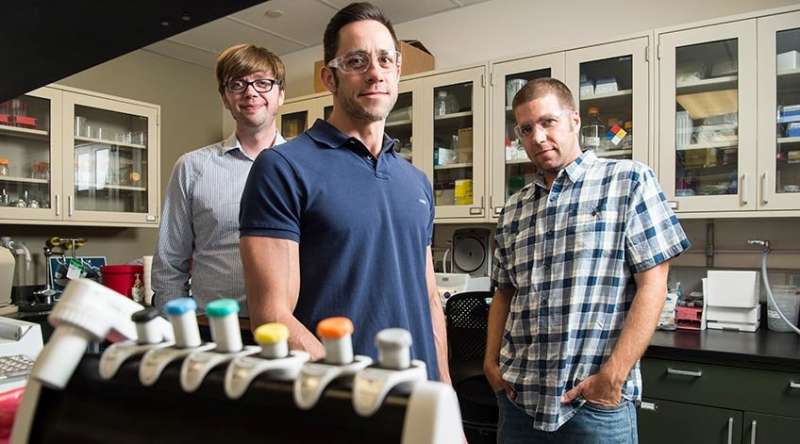Novel genetic method improves efficiency of enzyme

Researchers at the U.S. Department of Energy's (DOE's) National Renewable Energy Laboratory (NREL) and the University of Georgia developed a new genetic engineering technique to dramatically improve an enzyme's ability to break down biomass.
The new method, Evolution by Amplification and Synthetic Biology (EASy), enabled scientists to accelerate the evolution of a microorganism's desirable traits. This technique led to the unusual fusion of enzymes from two different species of bacteria and contributed to the emerging use of microbes to convert lignin, a major component of plant biomass, into valuable chemicals.
The EASy method enables the back-to-back incorporation of hundreds of copies of a gene—which contains the code for a specific enzyme—into a cell. This region of repetitive DNA provides the cell with a means to undergo accelerated evolution of this gene. This can ultimately lead to the generation of superior performing enzymes.
"We can make many, many random changes and identify those that are of interest using evolution," said Christopher Johnson, a molecular biologist in NREL's National Bioenergy Center and co-author of the new paper, "Accelerating pathway evolution by increasing the gene dosage of chromosomal segments."
Published in the journal Proceedings of the National Academy of Sciences, the paper was co-authored by NREL's Graham Dominick, Emily Fulk, Paval Khanna, Jeffrey Linger, and Gregg Beckham, and the University of Georgia's Melissa Tumen-Velasquez, Alaa Ahmed, Sarah Lee, Alicia Schmidt, Mark Eiteman, and Ellen Neidle.
Researchers inserted DNA that encodes the enzyme GcoA from the bacteria Amycolatopsis into another bacteria, Acinetobacter baylyi ADP1, placing it adjacent to the gene that encodes the CatA enzyme. The EASy technique resulted in the unusual fusion of two genes into a single gene encoding a chimeric enzyme.
The trait afforded by this chimeric enzyme was the ability to more efficiently convert a component of lignin—a particularly resilient part of plant biomass—into fuels, and a precursor of plastics such as nylon lignin comprises about 30 percent of biomass.
"It's a matter of conversion efficiency," said Linger. "If you're not using that 30 percent, you're throwing it away. We're trying to capture that 30 percent."
More information: Melissa Tumen-Velasquez et al. Accelerating pathway evolution by increasing the gene dosage of chromosomal segments, Proceedings of the National Academy of Sciences (2018). DOI: 10.1073/pnas.1803745115
Journal information: Proceedings of the National Academy of Sciences
Provided by National Renewable Energy Laboratory




















